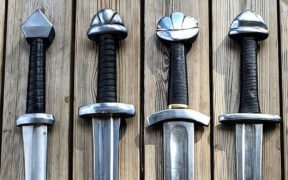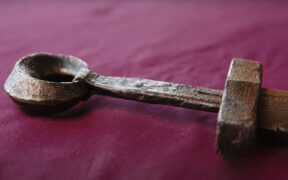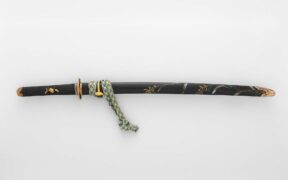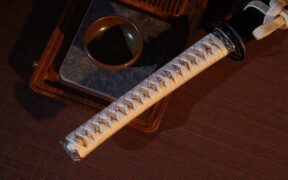Our content features commercial links to our products, committed to transparent, unbiased, and informed editorial recommendations. Learn More
Kashira: The Pommel Cap of a Sword
NO AI USED This Article has been written and edited by our team with no help of the AI
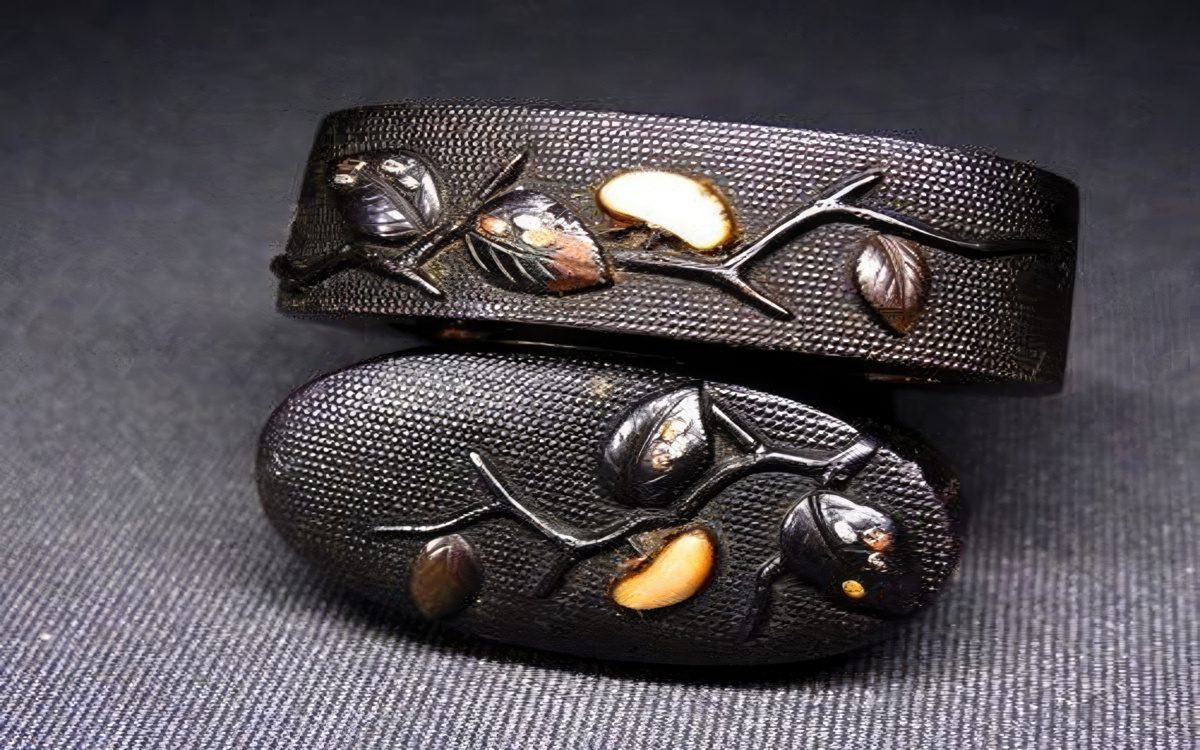
The kashira is the decorative pommel cap at the end of the sword’s handle, securing the hilt components in place. It often features intricate designs or motifs, reflecting the fine Japanese metalwork and craftsmanship.
Let’s explore the characteristics of a kashira, what makes it unique, and its function.
Characteristics of the Kashira
The kashira widely varies in material, design, and decorative elements, showcasing the skill and artistry of Japanese artisans.
Here are the unique characteristics of the kashira:
Material and Construction
The kashira was often made of metal but sometimes of horn. Buffalo horn was preferred since it was black—even if its black lacquer wore off, it would not be noticeable. Some were made of a copper-silver alloy called shibuichi, often with gold and copper inlay. Others were made of a copper-gold alloy called shakudo, which typically consisted of 4-10% gold and 96-90% copper.
Appearance and Function
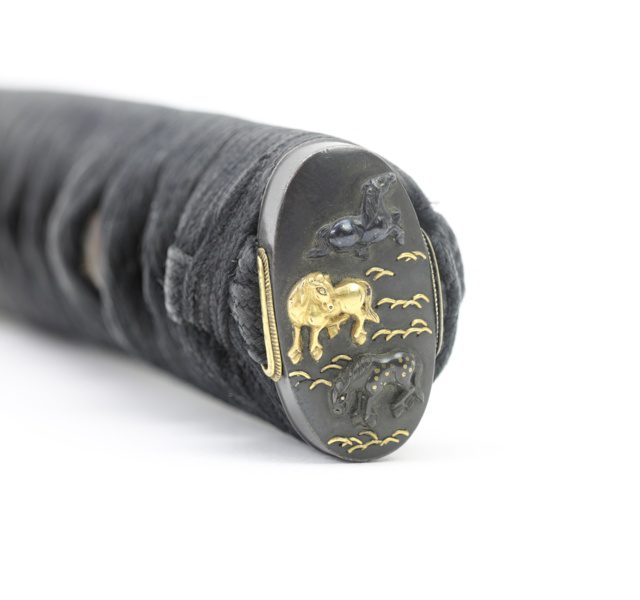
A Kashira can vary in shape, from rounded to domed, roofed, and humpbacked. The hilt (tsuka) is covered with a braided wrapping (tsuka-ito), which passes through the openings of a kashira, holding the latter in place. As a cap, the kashira secures the handle’s construction by preventing the same (ray skin) and tsuka-ito from coming loose over time.
Design and Decoration
A kashira often features intricate engravings and motifs, reflecting the aesthetic of the period or the owner’s personal style. However, a kashira without any carving or decoration is called numeri-kashira, literally slippery pommel.
Craftsmanship and Metalworking Technique
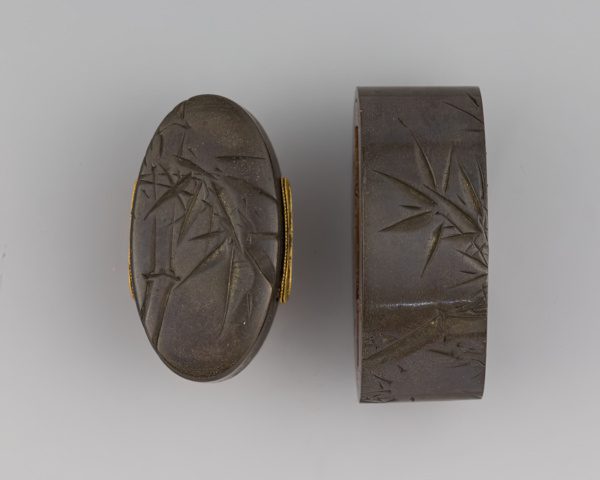
A kashira often boasts elaborate embossed patterns, engravings, and carvings. Some feature inlays of precious metals like gold or silver and other materials. Others even feature openwork designs or pierced areas, from simple geometric shapes to intricate nature-inspired patterns.
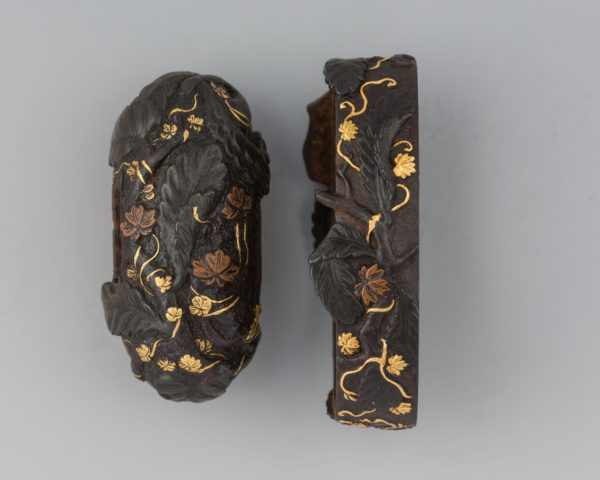
Among the most notable metalworking techniques is the katachibori, also known as single-chisel carving. It is a carving method where the motif forms the outline of a kashira and other sword fittings. The terms nikubori (sculptural or three-dimensional carving) and marubori (full carving) are also used.
Theme and Symbolism
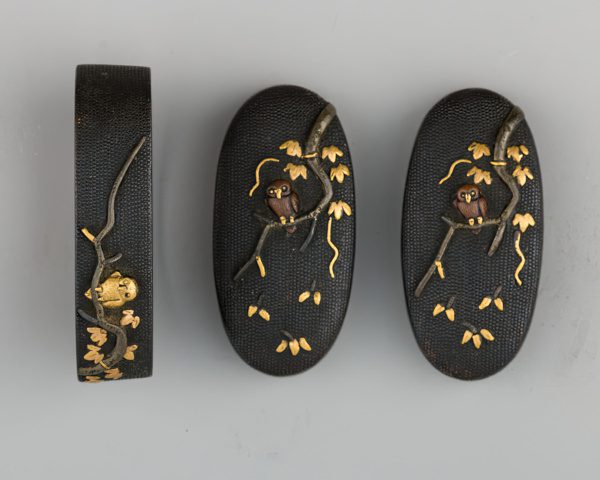
The decorations on the kashira often reflect specific themes or symbolism. Popular motifs include abstract designs, animals, mythical creatures, nature, flowers, landscapes, symbols, folklore, or even depict scenes from legends or historical events.
Facts About the Kashira
The term kashira literally means head, referring to the metal horn or cap at the end of the tsuka. As a suffix, it is pronounced as gashira and is sometimes called tsuka-gashira.
The fuchi and kashira were usually designed to match.
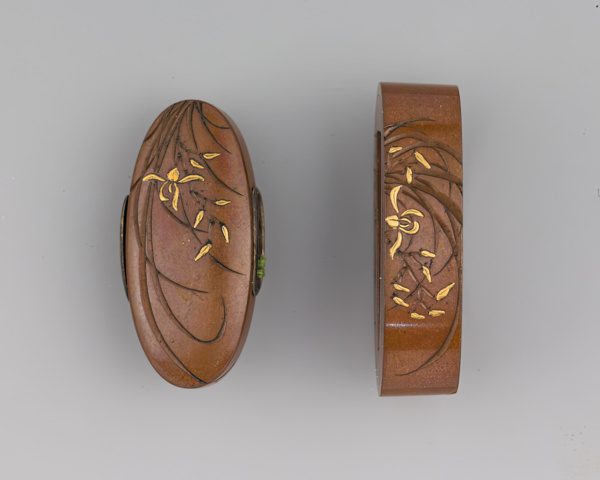
A mounting protects each end of a katana or wakizashi hilt. The fuchi is the collar at the base of the grip next to the sword guard (tsuba), with a hole to allow the tang to pass through. The other is the kashira on the pommel. The fuchi and kashira were often made in matching sets, often referred to together as fuchigashira.
A kashira also often matched other sword fittings of a koshirae.
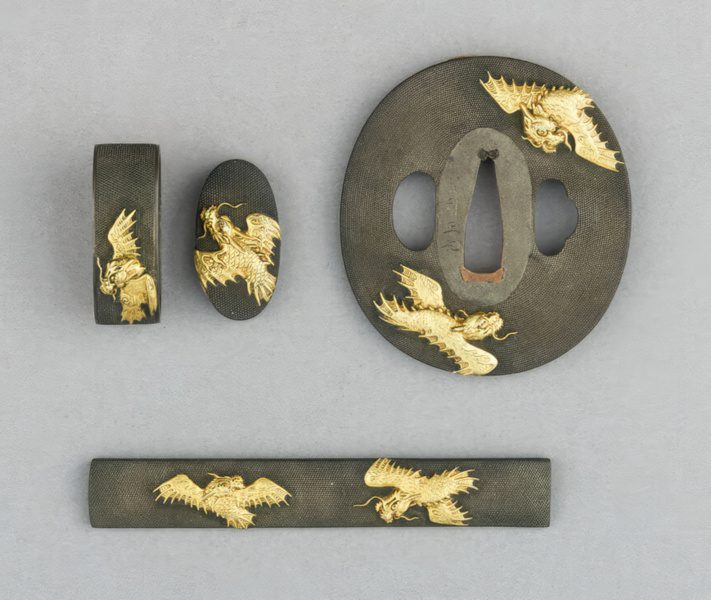
The term koshirae refers to a complete functional mounting of Japanese samurai swords and even tanto daggers. It consists of a braided hilt wrapping (tsuka-ito), a sword guard (tsuba), and lacquered scabbard (saya). Other sword fittings include matching fuchi and kashira, menuki (ornaments on the hilt’s sides), seppa (washers on each side of the tsuba), kojiri (scabbard chape), and sometimes a kozuka (handle of the utility knife).
A matching fuchi and kashira were often made for a daisho koshirae.
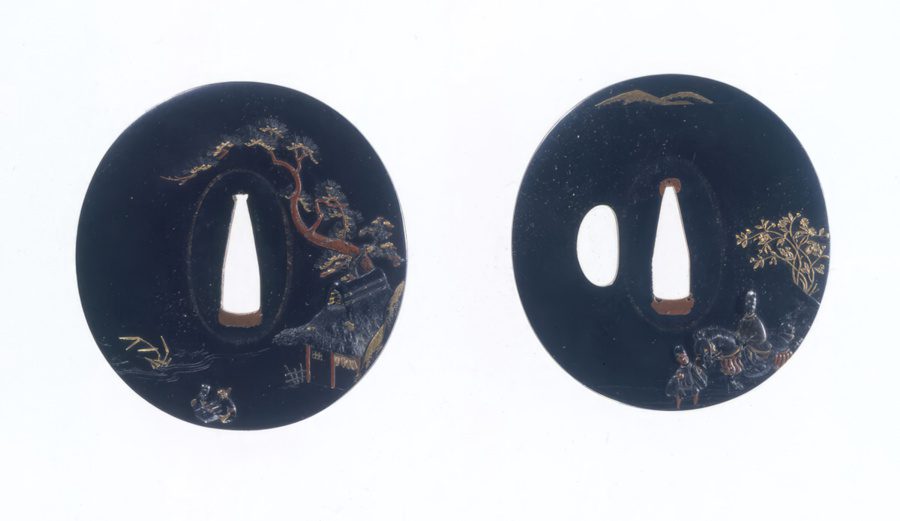
During the Edo period, spanning from 1603 to 1867, the samurai wore a paired set of swords called daisho, consisting of a katana and a wakizashi. Formal daisho hilts often had a black-lacquered horn kashira, white sharkskin wrapping, and black silk braid. The daisho carried by the daimyo were distinguished for their fine craftsmanship. Other types of daisho mountings had kashira made of shakudo or shibuichi.
Cross-cultural influences inspired some kashira designs.
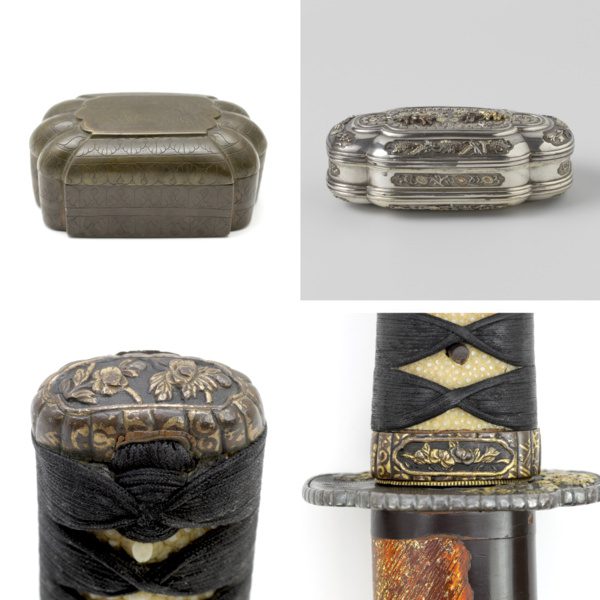
During the Edo period, there was significant cultural exchange and trade between Japan and other regions. Some kashira were shaped like an Indian betel box called pandan, which was used to hold betel leaves, nuts, and other ingredients for chewing. The pandan box also inspired Dutch tobacco boxes.
Some kashira featured Chinese-inspired motifs.
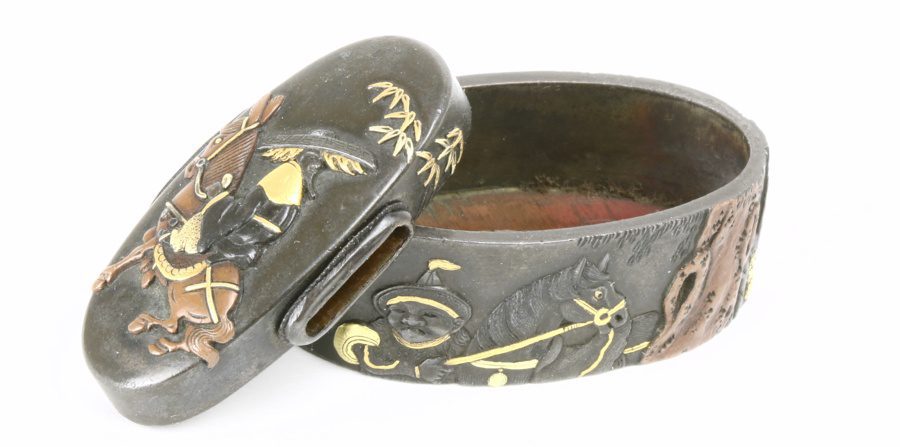
During the Edo period, Chinese high culture significantly influenced educated Japanese circles. Japan turned to China as a source of cultural inspiration when it had limited contact with the outside world. In a fuchi-kashira set, a kashira featured the Chinese scholar Su Shi, an important figure in classical Chinese literature.
The pommel of a tachi is called kabutogane instead of kashira.

The tachi is the earliest form of curved, single-edged sword in Japan. Its pommel is called kabutogane, meaning helmet metal-fitting. It is much larger than the later kashira and features large side openings. It also has a loop fastened to attach the sword knot (udenuki cord).
Conclusion
The kashira is a pommel cap that fits over the top of the hilt. It is one of the many sword mountings that contribute to a Japanese sword‘s overall beauty and functionality. With its intricate designs, motifs, and craftsmanship, the kashira is a testament to exceptional traditional Japanese metalworking.
